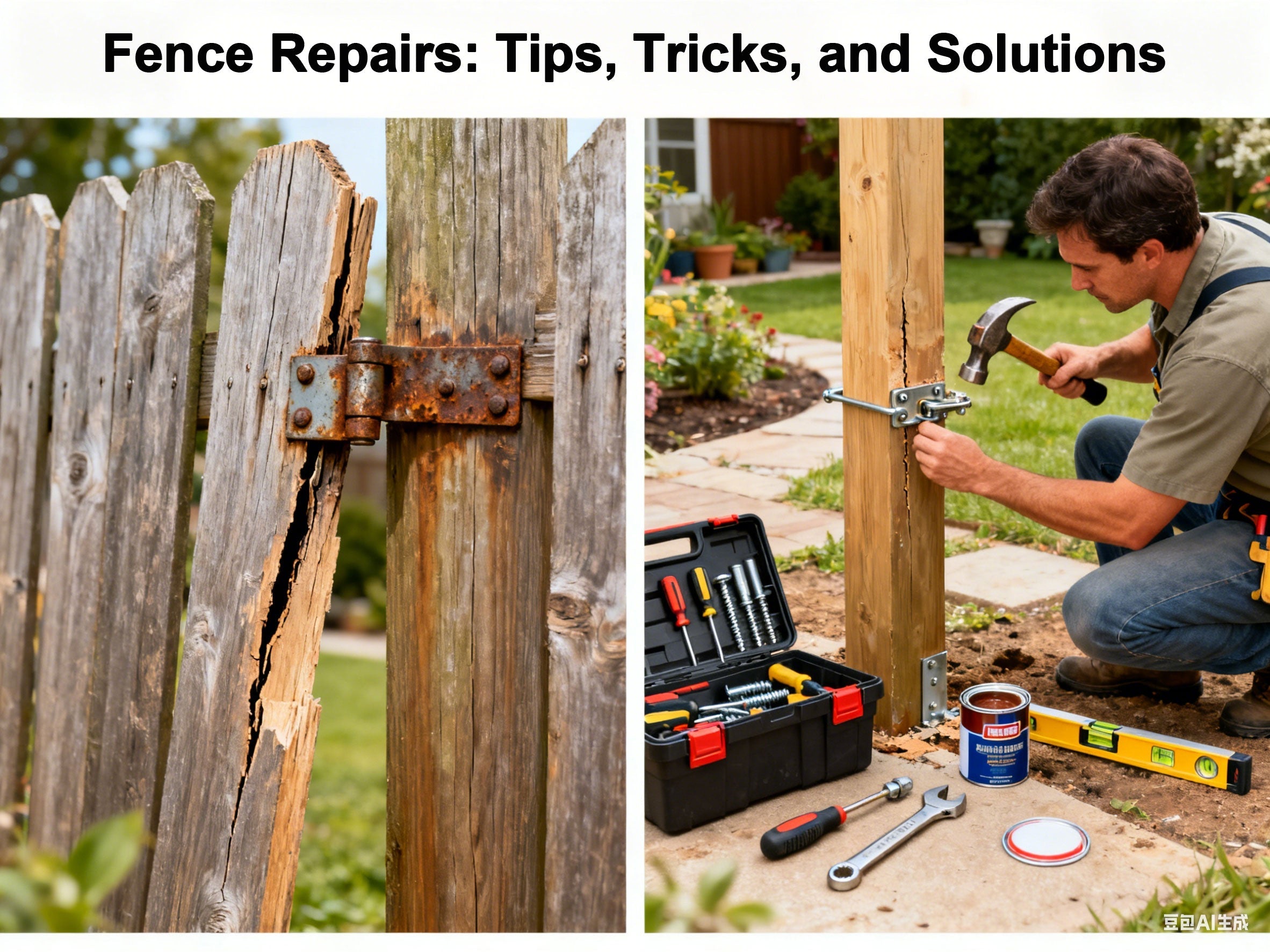
The Ultimate Guide to Fence Repairs: Tips, Tricks, and Solutions
Fences not only define the boundaries of your property but also enhance its aesthetics, privacy, and security. However, like all outdoor structures, fences are subject to wear and tear over time due to weather, pests, or general aging. Proper maintenance and timely repairs can save you money and keep your fence looking great for years to come. In this guide, we’ll share practical tips and tricks for repairing fences of various materials.
Common Fence Issues and How to Address Them
Loose or Leaning Fence Posts

Causes
1.Soil erosion or shifting
2.Rotten wooden posts
3.Poor initial installation
Solutions
1.Reinforce the post by using a metal post anchor or concrete footing to stabilize loose posts.
2.Replace the post if the wood is rotting. Dig out the old post and install a new one using treated wood or durable materials.
3.Add gravel drainage at the base of the post to prevent future rot.
Broken or Damaged Boards or Panels

Causes
1.Weather damage (rain, wind, snow, etc.)
2.Accidental impact
3.Pests like termites (for wooden fences)
Solutions
1.Wooden fences: Replace damaged boards with pressure-treated wood. Seal or paint the new board to match the existing fence.
2.Vinyl fences: Purchase a replacement panel from the manufacturer and ensure proper alignment when reattaching.
3.Composite fences: Use the manufacturer’s repair kit to fill cracks or replace individual slats.
Rust on Metal Fences

Causes
1.Exposure to rain and humidity
2.Poor maintenance or lack of protective coating
Solutions
1.Clean the rusted area using sandpaper or a wire brush.
2.Apply rust-resistant paint after cleaning, starting with a primer followed by rust- proof paint.
3.Prevent future rust by regularly inspecting and repainting the fence every 2-3 years.
Preventative Maintenance Tips for Long-Lasting Fences

1.Regular Inspections
Walk along your fence line every few months to check for signs of damage, loose hardware, or wear and tear. Catching small issues early can prevent costly repairs later.
2.Clean Your Fence Annually
Use a garden hose or pressure washer to remove dirt, grime, and mildew. For wooden fences, avoid high-pressure settings that may damage the wood.
3.Apply Protective Coatings
Wooden fences: Reseal or repaint every 2-3 years to protect against rot and weather damage.
Metal fences: Use rust-resistant paint to guard against corrosion.
Vinyl fences: Wash with mild soap and water to maintain its appearance.
4.Trim Nearby Vegetation
Keep trees, shrubs, and vines trimmed to prevent moisture retention and damage to the fence.
When to DIY vs. Call a Professional
DIY Repairs
1.Fixing loose boards or panels
2.Cleaning and resealing wood
3.Tightening or replacing hardware
Call a Professional
1.Severe leaning or structural damage
2.Large-scale rot or pest infestations
3.Complex repairs requiring special tools (e.g., welding for metal fences)
Hiring a professional ensures safety and quality, especially for large or complicated jobs.
Why Maintenance Matters
A well-maintained fence not only lasts longer but also enhances the value and curb appeal of your property. Investing time in repairs and maintenance is far more cost-effective than replacing an entire fence. Plus, a sturdy and attractive fence ensures your yard remains a private and enjoyable space for you and your family.
Explore High-Quality Fencing Options

Looking for durable fencing materials that require minimal repairs? At CourtyardMart, we offer a range of premium fences designed to withstand the elements and reduce maintenance needs. Explore our collection today and find the perfect fit for your yard.
Share This Guide!
Do you know someone struggling with fence repairs? Share this guide to help them keep their fence in top shape! For more expert tips and tricks, check out our blog for additional inspiration.



Leave a comment
This site is protected by hCaptcha and the hCaptcha Privacy Policy and Terms of Service apply.